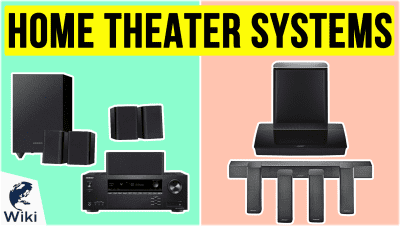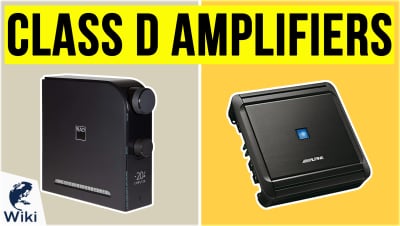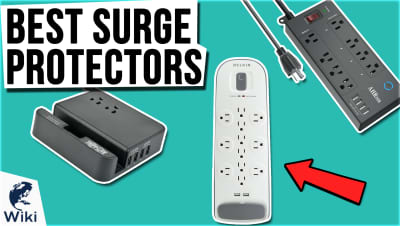The 10 Best Power Conditioners

This wiki has been updated 39 times since it was first published in October of 2016. If you want to protect sensitive and expensive electrical equipment from spikes and surges or a potentially dirty power line, these conditioners are the tools for the job. They can ensure that stable and safe voltage is always delivered to the components in home entertainment centers, recording studios, and more, and we've ranked them here by their signal fidelity, versatility, and ease of use. When users buy our independently chosen editorial selections, we may earn commissions to help fund the Wiki.
Editor's Notes
November 18, 2020:
While there wasn't a lot of turnover from our last ranking to this one, we did make one notable switch removing the previously included Tripp Lite model and replacing it with the Soundavo PMX-3300. For the value, the Soundavo has a lot more to offer, including a better form factor and sequenced power-up and -down for a higher number of outlets. That sequencing can come in handy if you have interconnected components that could harm one another, like an amp and powered speakers that could pop if turned on before or at the same time as the amplifier, potentially damaging their drivers.
Most of the models we've ranked are intended for home use, where the stakes of an imperfect signal are comparatively low held up against certain professional applications. There's also a lot that can be done in post-production to clarify the sound in a musical recording. For more stringent environments than these, we included the offering on our special honors list, which is suitable for use in laboratory settings and other environments where imperfect power can be far costlier. These models are also excellent voltage regulators, which can help preserve the integrity of any controls or parameters that need consistency throughout an experiment.
July 31, 2019:
While the means for conditioning power are well-established and relatively independent from much of the thrust in modern electronics, there are still undeniable advances — particularly in interfaces — that caused us to say goodbye to a few of the older models from our previous list, including a well-regarded Furman option. The displays on each of our top four selections are great examples of the progress the category has made toward becoming more user-friendly as building out a home theater has gotten less expensive and more popular. You'll notice a bit of a trend favoring models with more outlets as you move from number ten to number one, but that is often overrated by some models that may offer fewer outlets, but cleaner power or better interfaces. That's why you see the Furman P-8 Pro at number five, even as it has fewer outlets than both models at numbers six and seven on our list.
Special Honors
TSI Indoor Automatic Voltage Regulator While these models are technically voltage regulators — ensuring that the voltage they provide any given instrument is as consistent as possible — each one is outfitted with complete power conditioning capabilities. Single- and triple-phase builds are available at different voltage levels, and all are sufficiently reliable for use in laboratory settings. tsipower.com
The Power Conditioner: What It Is, What It Isn’t
Power conditioning is no different — plenty of folks out there swear that power conditioners amount to no more than glorified power strips.
If you look hard enough, you’ll find conspiracy theorists dedicated to just about any topic you can imagine. Power conditioning is no different — plenty of folks out there swear that power conditioners amount to no more than glorified power strips. These deniers are the same people who claim that the only tool you need to guarantee optimal power quality is a cheap surge protector.
If that really was the case, why would such ample demand for power conditioners exist in the first place? Simply put, a power conditioner solves problems that arise from dirty power (if you’re wondering what that means, we’ll get to that in a moment). This device acts as an intermediary between your audio gear, which requires an electrical load, and the supply source that provides that power.
In this role, the power conditioner works to control any improper occurrences that could potentially be detrimental to your equipment and the quality of your sound or video. When high-current equipment and appliances are connected to a system, electromagnetic interference and other deviations can negatively impact performance. The power conditioner serves as a buffer, counteracting these deviations by cleaning the contaminated power in your system.
Specifically, these devices accept the current coming in, filter out the electromagnetic interference, smooth out any additional fluctuations, then pass the clean electricity on to your gear. The more power appliances you have hooked up to your system, the greater the risk for surplus noise, electrical spikes, contaminated components, and general wear and tear to your equipment. A quality power conditioner will protect that equipment from these hazards and more, including potentially catastrophic events like lightning strikes.
This is a benefit to anyone who frequently uses high-performance audio and video equipment, such as commercial music venues, professional studios, and even those with residential systems.
Why Do I Want “Clean” Power?
Do you want top performance from your computers, speakers, instruments, kitchen appliances, home theatre system, sound studio, or signal processing gear? If so, then you’re going to want a clean power supply.
If you don’t already, it may be wise to start monitoring your home electronic energy use. Common issues that cause drops in performance include blackouts, variations in frequency, consistent high or low voltage, transient blasts of high voltage, and power surges. Power conditioners provide reliable protection from these occurrences.
Since you’re unable to visually see it, you’re probably unaware of the impact power fluctuations can have on your equipment.
As a music enthusiast, you want the highest quality sound from your audio equipment. The same goes for a movie enthusiast and the picture on her television, or a coder and his computer screen. Professionals want their equipment to work for them, not the other way around. Power conditioners will produce anywhere from a subtle to a noticeable difference in sound and image quality, depending on how much interference it’s working to correct.
Since you’re unable to visually see it, you’re probably unaware of the impact power fluctuations can have on your equipment. The deterioration can happen gradually, and you may not notice the reduction in quality until it’s too late. A power conditioner helps maintain your gear, elongating the life of the components in your system to which you’ve probably invested a substantial amount of money.
From an organizational standpoint, power conditioners can simplify your life and your space. As a central hub for all your power supplies, these tools will help you logically arrange that tangled mess of wires and cables, which makes adding new appliances and removing old gear that much easier.
Although standard models don’t take up much room to begin with, if you have rack space, a rack mount power conditioner will allow you to further maximize the space available. This will help keep all of the components of your rack running smoothly.
Those deniers we mentioned previously — the ones who erroneously believe a surge protector or power strip will suffice for their power cleaning needs — will be dealing with damaged equipment while you’re still enjoying peak performance. Those devices will successfully filter some fluctuations, but they’re not able to fully clean contaminated power.
The Evolution Of Power Conditioners
It’s kind of wild to think about, but the iPhone has only been around since 2007. It wasn’t that long ago that we were still watching VHS tapes. I’m not waxing poetic about the past; I’m simply pointing out that today’s technology advances at a rocket’s pace, creating an urgent need for tools like power conditioners.
I’m not waxing poetic about the past; I’m simply pointing out that today’s technology advances at a rocket’s pace, creating an urgent need for tools like power conditioners.
Modern audio and video sources are far more vibrant and complex than they were even a couple decades ago. As mediums like CDs, DVDs, and Blu-ray discs grew in popularity, performance expectations began to rise, as well. Fast-forward to today, and we live in an era where virtually everyone can enjoy audio and video quality that was once reserved for industry professionals and only the wealthiest of consumers.
To keep up with growing demand for quality, clean power has become a necessity for those who utilize an abundance of equipment. Even if your home’s electrical system was upgraded within the past decade, do you have absolute confidence that everything is fully up to code? If something within the system is off, it’s better to burn out your power conditioner than to cause irreparable damage to all of your expensive equipment.
In terms of design, a dependable modern power conditioner should feature internal filter banks that isolate the individual power outlets on the device. This helps to prevent interference among components, as the power requirements of a home entertainment system will be different than that of, say, a single laptop computer.
A voltmeter that provides real-time voltage feedback via a display screen is a useful feature that more units now offer, as well. Many come with built-in LED lights and retractable lamps that make them easier to manage in low-light areas. Some will even automatically shut off power to all connected components if they detect a surge or a brownout, only to restore all power once electricity has returned to normal levels.















